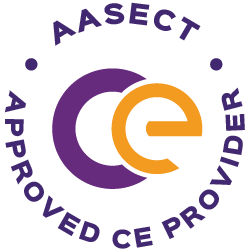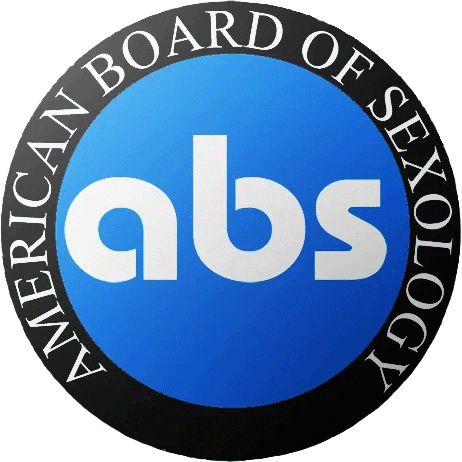In everyday life, we use tools to make our lives easier. For example, we load dishwashers instead of scrubbing each dish by hand, we use hand drills to build, and our computers make everything easier—the list could go on and on. And typically we don’t assign a moral grading system to these actions. We utilize the tools at our disposal to work more efficiently and effectively—it’s not morally better to refrain from using these tools. All they do is make our lives easier! This is the case when it comes to sex and pleasure products, too.
Pleasure products like vibrators, strokers, penis rings, and plugs are amazing tools that can aid in and enhance our sexual experiences. They are often simple fixes to frustrating problems, and they can increase our pleasure capacity and access tremendously. That’s why, in our clinical practices, introducing sex toys is something sex coaches can do to guide and support our clients.
But unfortunately, much like other areas of sexuality, there are myths and misconceptions that clients hold and internalize about sex toys long before ever coming to see us.
So how can we introduce pleasure products as a resource to our clients, and reframe their mental processes around these tools? Keep reading to learn about the different concerns sex toys can help with, and how to bust the myths that can keep our clients stuck.
Pleasure Products for Pre-Orgasmia
One area of concern that clients bring to our practices is around orgasm. Female-bodied individuals commonly struggle with orgasm either alone or with a partner. In Sexology, we refer to this as preorgasmia primary (when they are preorgasmic whether they are alone or with a partner) and preorgasmia secondary (when they are preorgasmic only with a partner). There are a multitude of causes for these concerns, and getting to the bottom of it could be a part of the sex coaching process. But getting past the block and into their orgasm potential is really what sex coaching is about.
Utilizing pleasure products can be tremendously helpful in this area, and introducing them to this type of client could be the key that helps them reach their sexual goals. Depending on their level of experience, they may have never experimented with any kind of sex toy. Or maybe they have, but as a last resort, or maybe they haven’t found the right one. As sex coaches, we can offer product recommendations, teach a client how to use a toy, and offer them specific exercises to try while using them.
If your client is preorgasmic primary—you might suggest that they try a new solo pleasure practice that incorporates a vibrator. The exercise you recommend will vary greatly, depending on your client’s comfort, history, and blockages—but one practice you can offer goes like this:
Block out an hour of time where you can be distraction-free and relaxed. Find a comfortable place to play, such as the bathtub or your bed. Begin with some suggested erotic media (a book, audiobook, video, or movie) and notice how your body responds. Allow arousal to build and start manual stimulation as normal, adding the vibrator toward the end. When judgments come up in your mind, notice them without engaging. The point is to connect with your arousal and utilize the vibrator to help you increase sensation at the plateau. Allow the orgasm, don’t try to orgasm!
Adjust this practice to the client’s needs, and suggest a toy that will work well with their body’s needs.
If your client is experiencing difficulty with orgasm while with a partner—toys can help here, too. Suggest adding vibrating clitoral stimulation during penetrative sex. This, along with taking adequate time for arousal, can often remedy this concern. Some toys are marketed specifically for this type of play, like vibrating cock rings or wearable internal vibes. But I have found that handheld vibrators that are small enough to slip between bodies are often more helpful. Suggest a few to your client and have them try them out!
Orgasm Control
Toys can also help our clients who are experiencing issues with ejaculation. While this will again vary largely based on a client’s specific needs, goals, and blockages—there are a few general ways we can use sex toys in this area.
Penis rings (or cockrings) can be used to assist in keeping the blood flow from leaving an erection. This can aid clients who have difficulty maintaining their erection. It can also aid in increasing pleasure, by helping clients have stronger and longer erections.
We can also suggest to our clients different stroker toys. These products work by gripping the penis with a stroking sensation—simulating the feeling of a vagina or anus. Using these toys can help with practicing orgasm control for clients experiencing issues with early ejaculation. The “back it up” method is commonly suggested—where your client learns their specific arousal and orgasm pattern and then practices bringing themselves back from the threshold of orgasm. Using a stroker during this repeated exercise can sometimes offer more control than manual stimulation, and give them more specific feedback. Sometimes it’s helpful in the way that it simply breaks their normal routine of manual stimulation and helps them become more aware of their body’s response signals.
Busting Myths
When incorporating toy suggestions and practices into your clinical practice—you will undoubtedly come across myths and misconceptions held by your clients.
Some clients may worry about becoming “addicted” to their vibrator, some may believe that an orgasm resulting from a toy is inferior to an orgasm resulting from manual stimulation. You might also encounter beliefs around self-adequacy or feelings of being broken. These misguided beliefs and misconceptions will need to be addressed along with the suggested practices and recommendations.
If your client is worried about “vibrator addiction” you can teach them that it’s not possible to become addicted to a vibrator and that what they are most likely referring to is called “accustomization,” which can be remedied by switching up different types of stimulation.
If your client has internalized beliefs about an orgasm hierarchy (some orgasms being superior to others), you can help them move into a place where they value ALL of their orgasms, perhaps by exploring different types and reporting how they differ and how they are the same. Sort of like a sexy scientific analysis of their pleasure!
If your client feels that they are broken because they are preorgasmic, you can remind them how our culture injects shame and guilt into the very fabric of female sexuality—and that orgasm difficulty is more common in women than not. Use tools like media and educational materials to normalize the use of pleasure products in women.
Incorporating toys in a clinical practice will involve more than just recommendations. We also have to empower our clients to work with their bodies, rather than against them. They deserve to experience pleasure in a way that feels good—not in a way that is dictated by outdated rules and expectations.
Pleasure products like vibrators, stokers, butt plugs, and cock rings are all amazing tools at our disposal. As sex coaches, we should be informed and educated about pleasure products. What’s on the market? How can these products be used? How do you play safely?
This is important information we have the opportunity to pass along to our clients—and it can be a hugely beneficial tool to keep in your sex coaching tool kit!
Curious about training to become a Certified Sex Coach™? Join the next live Info Session to meet the SCU team and participate in a live Q&A!








